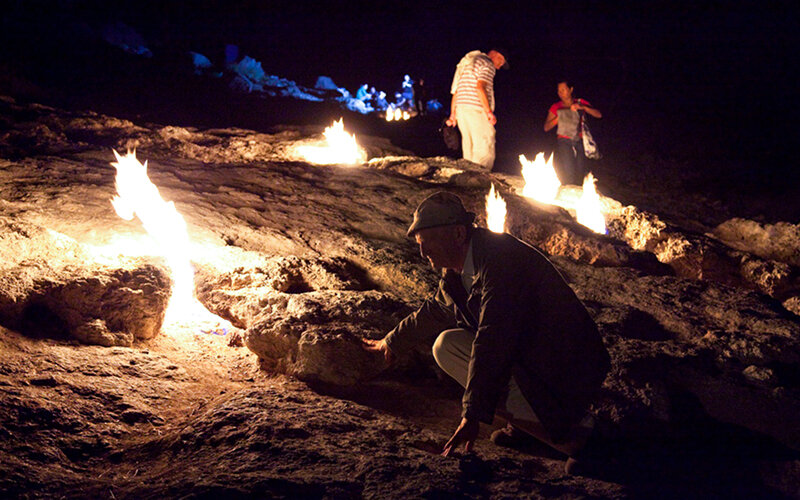Xenomythology
/Xenomythology
Fact or fanfiction?
The Baptism of Christ, Aert de Gelder, 1710
Have you wondered if there is life out there in space? Many have, and many believe that there is. You may have even imagined that one day, we may discover another civilization in a galaxy, far, far away from our own.
But what if they already visited us? What if they visited us long, long ago, when humanity wasn't ready? Thus, advanced technology is deemed supernatural, and aliens are worshipped as gods. What if this is the true origin of mythology?
The Paleocontact Theory
This is a real theory that some have that has been popularized in the modern day by the TV show Ancient Aliens. This speculation was brought to life in the 1960s by two well-known astrophysicists, Carl Sagan (yes, THE Carl Sagan) and Iosif Shklovsky in their book, Intelligent Life in the Universe (1966). In the book, they devote a chapter to the possibility of alien contact being made long before recorded history.
While this theory was mere speculation, it was enough to inspire an entire sub-genre of writing and thinking. The "ancient aliens" trend, along with all trends, had a pioneer. His name was Erich von Däniken, and he was crazy. Through his bestseller, Chariots of the Gods? (1968), Erich popularized the theory of paleocontact (alien contact made before recorded history).
Of course, the global scientific community was skeptical. Sagan and Shklovsky's paleocontact theory was mere speculation, but ancient mythology stories backed it up. One piece of evidence is the tale of Oannes in ancient Sumerian mythology. Oannes was a fish-like bipedal creature that resembled and behaved like a human. They, along with other similar looking creatures, spread the concept of civilization to humans. Sagan and Shklovsky believe in the possibility of the stories being true tales of alien contact due to the story's consistency and detail despite its extreme age.
““Stories like the Oannes legend, and representations especially of the earliest civilizations on Earth, deserve much more critical studies than have been performed heretofore, with the possibility of direct contact with an extraterrestrial civilization as one of many possible alternative explanations.” ”
Erich's Evidence
On the other hand, Erich's hypothesis is based on "out-of-place artifacts," artifacts found that "couldn't possibly be made" by humans with their primitive technology. Erich was the first to propose that megalithic sites were built by aliens or by humans who were granted the know-how by aliens. These sites include the Pyramids of Giza, the Moai of Easter Island and Stonehenge.
Photo by Joshua Michaels on Unsplash, Photo by Thomas Griggs on Unsplash, Photo by Debbie Grap on Unsplash
Erich also believes that certain prehistoric artwork supports his points. One infamous example is the Egyptian "helicopter hieroglyphs." You may have seen them before, surrounded by obnoxious circles and arrows. Another is the Dogū figurines made in Japan, which Erich says, "resemble astronauts."
Pictured are what some theorize to be ancient descriptions of advanced technology, such as tanks, helicopters and jet planes.
Dogū Statue
Created around 1000-400 BCE in Japan
Supposedly resembles an astronaut
The most significant piece of evidence Erich has up his sleeve resides in the Bible. In the first chapter of the Book of Ezekiel, Ezekiel has a vision. Ezekiel recounts this vision being of an "immense cloud" of fire, spewing lightning and "brilliant light." In the cloud's fire came "what looked like four living creatures" that were winged and resembled humans. The creatures "sped back and forth like flashes of lightning" and "fire moved back and forth among the creatures." The creatures were also accompanied by four shiny objects, each appearing "like a wheel intersecting a wheel." The things moved as the creatures moved, following them.
While the Bible states that Ezekiel saw angels, Erich believes that Ezekiel saw spaceships. It sounds preposterous until you see an artist's depiction of what Ezekiel saw…
Yeah, I'm going to believe Erich on this one.
Pseudoscientific Nonsense
While this theory is fun to imagine, the idea of ancient aliens is not taken seriously by academics. Erich and other paleocontact-believers are often accused of pushing "pseudoscience" and "pseudoarcheology." Egyptologists debunked the "helicopter hieroglyphs" as pareidolia, deriving from large distribution of doctored images, resulting in missing vital details. As for Erich's book, another book refutes all of Erich's points; that book is The Space Gods Revealed (1976) by Richard Story.
In his book Broca's Brain (1979), Carl Sagan acknowledges his influence of the ancient aliens theory. Sagan expresses his disapproval of "von Däniken and other uncritical writers" and reiterates his earlier conclusion that extraterrestrial visits to Earth were possible but unproven and improbable.
It turns out the truth isn't here, but it may still be out there.

















































































